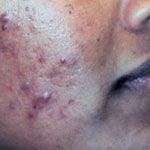Our bodies are continually changing. We grow and change from a baby girl to a big girl to a young teenage girl, then into a woman and into old age. Throughout these phases, our body goes through many different changes and faces many challenges. To best cope with our ever-changing bodies and to be strong enough to face the challenges, we must look after our health.
Our dietary needs change throughout all of these phases, and for females, particular attention should be paid to our intake of iron, calcium, folate and phytoestrogens.
IRON
Iron deficiency is the most common nutrient deficiency affecting females, due to menstrual blood loss. Teenage girls and pregnant women particularly should be aware of their iron intake – teenage girls because they are going through growth spurts and pregnant women because the developing foetus draws all the iron it needs to last through the first five to six months after birth, putting great demands on its mother’s body. Iron deficiency during pregnancy can lead to a premature or a low birth weight baby.
Signs of iron deficiency include irritability, difficulty in concentrating, and constant tiredness. Good sources of iron include liver, red meat, egg yolks, legumes, nuts and leafy green vegetables. Iron absorption can be impaired by high-fibre diets and alcohol.
CALCIUM
The calcium intake of teenage girls, pregnant women, breastfeeding mothers and women going through menopause is of extreme importance.
Almost half of the adult skeleton is formed as a teenager, and calcium absorption is highly efficient at this phase of our life. The more bone we build during this period, the better off we will be as bone mass is lost later in life.
Additional calcium is also required during pregnancy and breastfeeding for the development of the baby’s bones and to reduce the likelihood of high blood pressure. Increasing calcium intake during pregnancy helps to conserve the mother’s bone mass while meeting the needs of the foetus. A calcium-rich diet through menopause also slows bone loss to some extent.
Good sources of calcium include dairy and soy milk products such as cheese and yoghurt, green leafy vegetables and whole fish.
FOLATE
Folate, or folic acid, is a B-group vitamin that is essential for periods of rapid growth, such as childhood, adolescence and pregnancy.
Folate supports the body’s growth and development, prevents birth defects and lowers the risk of heart disease and cervical, colon and lung cancers.
Good sources of folate include green leafy vegetables, dried beans, peas and lentils, orange juice, oranges, fortified milk, cereals and oats. Many other vegetables and fruits, plus tea, provide small amounts of folate.
PHYTOESTROGENS
Phytoestrogens are natural, oestrogen-like substances found in certain plant foods which have been linked to a range of health benefits, especially for women.
Phytoestrogen-rich foods may help to reduce the likelihood of breast, skin, bowel and other cancers, control blood cholesterol levels, lower blood pressure, prevent bone loss, maintain brain functioning, maintain healthy skin and help reduce hot flushes in menopause.
Good sources of phytoestrogens include soy linseed bread, alfalfa sprouts, whole bean soy milks, wholegrains, sesame seeds, nuts, legumes, herb teas and extra virgin olive oil.
If you are at all concerned about your diet, talk to your doctor. Your doctor may advise you on the best way to get all of your daily nutritional requirements, and may recommend the best supplements to suit your needs.
Stay healthy, stay strong and grow old gracefully.






Comments are closed.